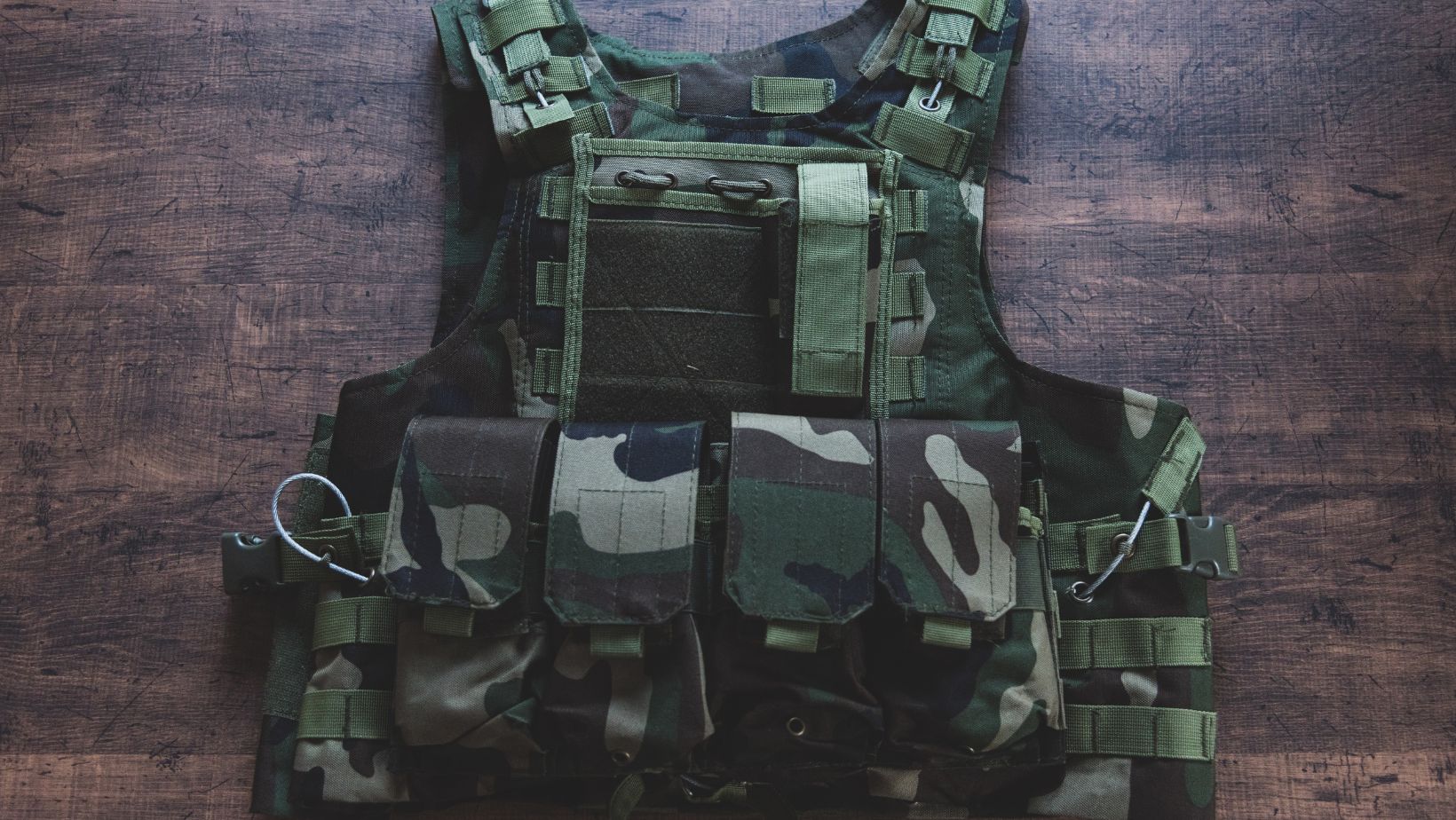Imagine wearing a vest that makes you feel invincible, shielding you from virtually any threat you might face. When you’re selecting a body armor vest, it’s crucial to consider the type of protection you need, from high-strength fibers like Kevlar to rigid ceramic or steel plates. Comfort and mobility are just as important as ballistic protection levels, especially during critical missions. But how do you balance these elements to ensure optimal coverage without sacrificing agility? The answer lies in understanding the key features and threat assessments tailored to your specific needs.
Types of Body Armor Vests
There are primarily two types of body armor vest: soft body armor and hard body armor, each designed for different levels of ballistic protection. Soft body armor is typically made from high-strength fibers like Kevlar or Dyneema and is intended to protect against handgun rounds and shrapnel. This type of armor is often found in covert vests, which you can easily wear under clothing due to their lightweight and flexible nature. Covert vests are ideal for situations where discretion is essential, such as undercover operations or executive protection.
On the other hand, hard body armor incorporates rigid plates made of materials such as ceramic, steel, or polyethylene. These plates provide enhanced protection against higher-caliber rifle rounds but are significantly heavier and less flexible. Hard body armor is commonly used in tactical vests, which are designed for overt use in high-risk scenarios, including military operations and SWAT engagements. Tactical vests not only offer superior ballistic protection but also feature multiple compartments for carrying additional gear like ammunition, medical supplies, and communication devices.
Key Features to Look For
When selecting a body armor vest, focus on key features such as ballistic protection levels, weight, comfort, and modular capabilities to ensure it meets your operational requirements.
One of the primary factors is material composition. Modern vests often use advanced fibers like Kevlar, Dyneema, or polyethylene, which offer high tensile strength while maintaining a lightweight profile. This balance is crucial as it directly impacts your mobility and endurance.
Weight significantly affects user fatigue; therefore, opting for a vest that provides optimal protection without excessive bulk is essential. Comfort is another critical aspect. Look for vests with moisture-wicking liners and adjustable straps to enhance wearability during extended operations.

Modular capabilities offer the flexibility to customize your vest according to specific mission needs. Integrated MOLLE (Modular Lightweight Load-carrying Equipment) systems allow you to attach various pouches, holsters, and other gear, increasing operational efficiency.
Additionally, always consider the warranty period. A longer warranty signifies the manufacturer’s confidence in their product’s durability and performance. Typically, warranties range from 5 to 10 years, covering material defects and wear and tear.
Evaluating these key features analytically ensures you invest in a body armor vest that provides reliable and long-lasting protection.
Ballistic Protection Levels
Understanding ballistic protection levels is crucial for determining the effectiveness of a body armor vest in stopping specific types of ammunition. The National Institute of Justice (NIJ) certification standards are the benchmark for assessing these levels. These standards classify protection levels from Level IIA to Level IV.
For example, Level IIA offers protection against 9mm and .40 S&W rounds, while Level IV can stop .30-06 M2 AP rounds. Material composition plays a significant role in achieving different protection levels. Soft armor typically uses aramid fibers like Kevlar or ultra-high-molecular-weight polyethylene (UHMWPE) for flexibility and comfort, suitable for Levels IIA to IIIA.
On the other hand, hard armor incorporates ceramics, steel, or composite materials to meet the rigorous demands of Level III and IV protection, balancing weight and durability. When selecting a vest, you should consider the threat level you’re most likely to encounter. Certification standards provide a reliable framework to ensure the vest meets specific ballistic resistance criteria.
Keep in mind that higher protection levels generally increase the vest’s weight and may affect mobility. Hence, understanding these nuances will help you make an informed decision.
Stab and Slash Resistance
Evaluating a vest’s stab and slash resistance is vital for ensuring comprehensive protection against edged weapon threats.
You need to understand that the materials used in these vests are specifically designed to prevent penetration from knives and sharp objects. Common materials include high-performance fibers like Kevlar, Dyneema, and Twaron. These fibers are woven tightly to create a dense fabric that can absorb and distribute the force of a stab or slash, minimizing the risk of injury.
When assessing stab and slash resistance, it’s crucial to refer to established testing standards. The National Institute of Justice (NIJ) and the Home Office Scientific Development Branch (HOSDB) set rigorous protocols to evaluate the effectiveness of body armor. These standards include tests for different threat levels, such as the force of the attack and the type of weapon used.
For instance, NIJ Standard-0115.00 specifies the minimum performance requirements for stab-resistant armor, covering various threat levels from low-energy slashes to high-energy stabs.
Comfort and Mobility
While the effectiveness of stab and slash resistance is paramount, ensuring the vest provides optimal comfort and mobility is equally important for operational performance. You need a vest that doesn’t just protect but also lets you move freely and stay comfortable. An ergonomic design ensures the vest conforms to your body’s natural movements, reducing fatigue during prolonged use.
One critical factor is thermal regulation. Advanced materials and construction techniques can significantly impact temperature control, preventing overheating in high-stress situations. Data shows that vests with built-in ventilation systems can reduce core body temperature by up to 15%, enhancing your comfort level during extended operations.
Mobility hinges on the vest’s weight distribution and flexibility. Lightweight, high-tensile strength fibers like Kevlar and Dyneema offer superior protection without compromising on agility. Studies indicate that vests incorporating segmented or modular designs improve the range of motion by 20%, making it easier to perform dynamic tasks.

Incorporating adjustable straps and padding can further ensure a customized fit, adapting to various body shapes and sizes. This adaptability reduces pressure points, enhancing overall comfort. By focusing on these aspects, you can achieve a balance between protection, comfort, and mobility, which is critical for optimal operational efficiency.
Choosing the Right Vest
Selecting the right vest requires a data-driven approach to match specific operational needs with the vest’s protective capabilities and comfort features. First, you should conduct fit testing to ensure the vest provides optimal coverage without restricting mobility. Fit testing involves measuring the wearer’s torso dimensions and conducting dynamic movement tests to evaluate the vest’s performance under realistic conditions.
Next, consider the level of protection required. Analyze threat assessments to determine if you need Level II, II, III, or IV body armor. Each level offers varying degrees of resistance to ballistic threats, from handgun rounds to rifle fire. Don’t overlook the importance of concealed wear if covert operations are part of your duties. Lightweight, low-profile vests can be worn discreetly under clothing while still offering significant protection.
Material composition is another critical factor. Modern vests often incorporate advanced fabrics like Kevlar or Dyneema, which provide high tensile strength and durability. Ensure the vest’s design accommodates tactical gear and accessories, such as MOLLE webbing for pouches and equipment.
Conclusion
In selecting a body armor vest, it’s crucial to balance ballistic protection with comfort and mobility. While high-strength fibers like Kevlar offer unparalleled flexibility, rigid plates provide maximum defense against severe threats.
Analyze your specific needs and threat assessments to determine the optimal vest. Remember, the right choice not only safeguards your life but also ensures agility during critical missions.
Make an informed decision; your protection and performance depend on it.


